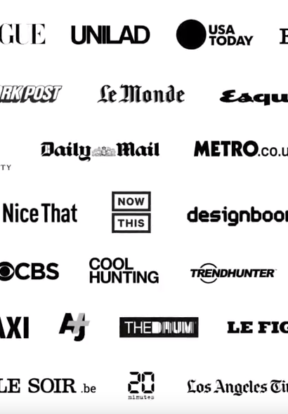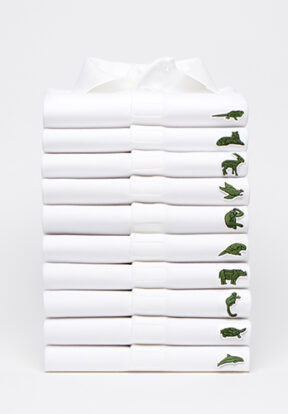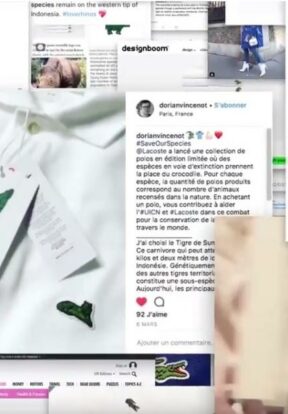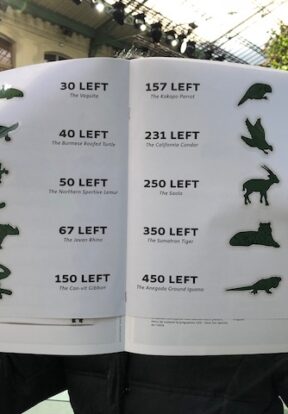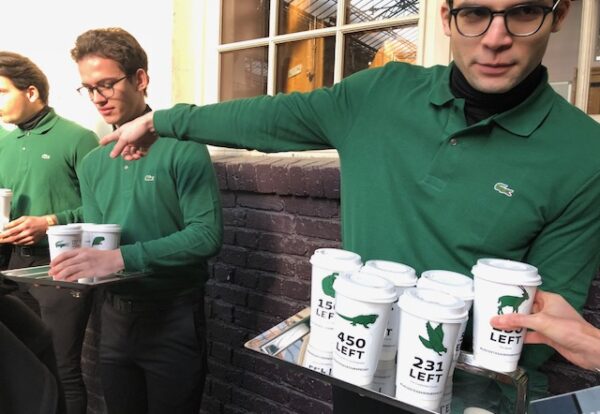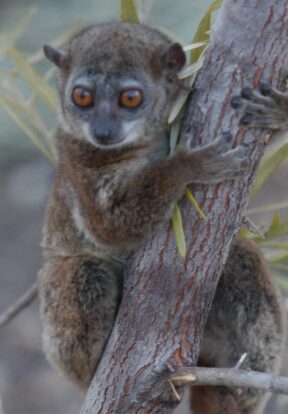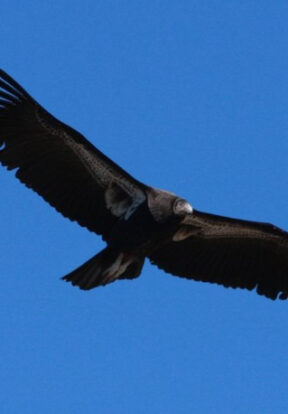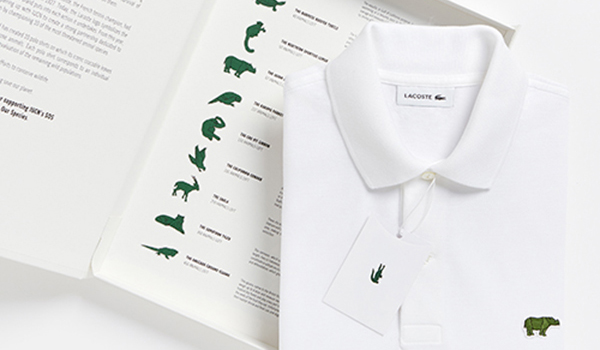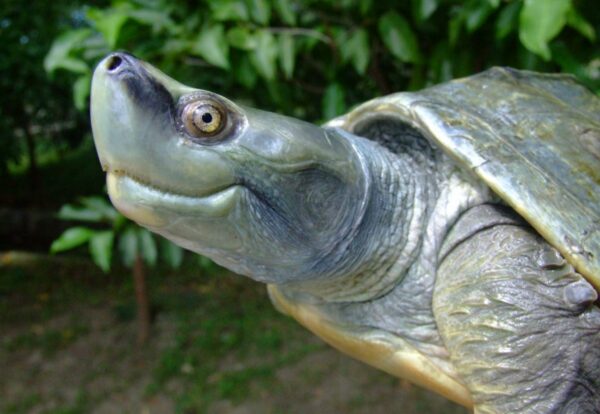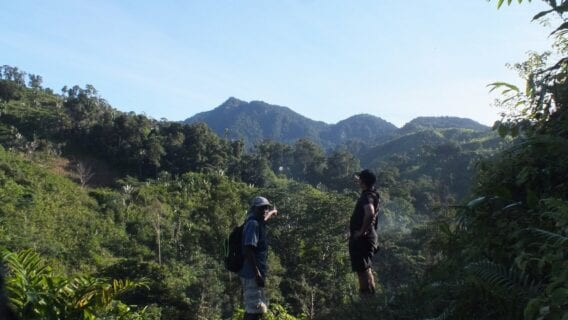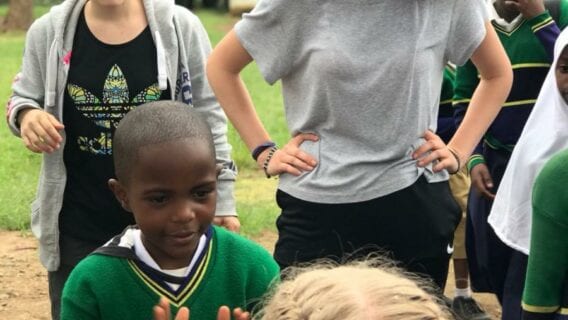From Awareness to Action: Lacoste’s Support for Species Conservation Gets Real
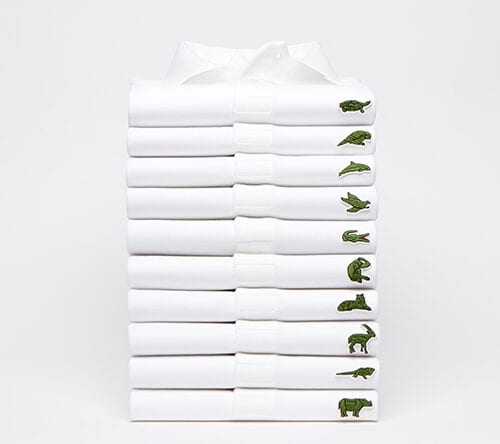
In February 2018, IUCN Save Our Species launched a 3-year partnership with French global fashion design company Lacoste SA. The objective is to transform public awareness and engagement in species conservation action through outreach campaigns leveraging the brand’s creativity combined with support for projects on-the-ground targeting species highlighted by the awareness campaign.
With one campaign per year, it will be difficult to improve on the creativity and media attention generated by the 2018 operation. Instead Lacoste are working hard to develop something unique for Spring 2019. Meanwhile, as the first related Call for Proposals opens, the attention now switches from celebrating the inspiring power of wildlife to supporting action on-the-ground: inspiring in its own right, nonetheless.
The first operation focused on the company’s crocodile logo making space for ten threatened species using an integrated media campaign featuring social media influencers and the sale of attractive limited edition polo-shirts. The number of polo-shirts corresponded to the number of known remaining individual animals in the wild for each species.
The ten threatened species featured in 2018 included: The Vaquita (Phocoena sinus), Burmese Roofed Turtle (Batagur trivittata), Northern Sportive Lemur (Lepilemur septentrionalis), Javan Rhino (Rhinoceros sondaicus), Cao-vit Gibbon (Nomascus nasutus), Kakapo (Strigops habroptila), California Condor (Gymnogyps californianus), Saola (Pseudoryx nghetinhensis), Sumatran Tiger (Panthera tigris sumatrae) and the Anegada Ground Iguana (Cyclura pinguis).
Launched during Paris Fashion Week, the campaign went viral via Instagram, then Facebook jumping into mainstream press and television coverage worldwide over a matter of days. Collecting an unprecedented ten Cannes Lions Advertising Industry awards in June testified to its originality in terms of execution, messaging and effectiveness – the polo-shirts sold out in 24 hours, campaign videos and other content were shared 600,000 times and visits to the IUCN Save Our Species website soared in response.
The campaign generated significant awareness and media coverage for threatened species, Lacoste and IUCN. But it also demonstrated how a company can integrate species conservation into its core business – selling apparel in this case – in a way that was aligned with its own corporate positioning while adding significant equity to the Lacoste brand; the Mexican government wrote to thank Lacoste for raising awareness of the Vaquita’s plight for example.
Beyond the obvious connection between Lacoste’s 85-year old logo and the work of IUCN Save Our Species there was a good fit in terms of shared objectives and vision: promoting awareness and interest in species includes engaging younger audiences who will influence the policies and spending patterns of tomorrow as well as the zeitgeist of today. Recently Lacoste has positioned itself more prominently with younger audiences through association with artists as well as enhanced presence on social media channels such as Instagram and SnapChat for example.
The immensely positive response to this first campaign suggests that Lacoste has its finger on the pulse and that consumers can be inspired by nature in ways that influence their behaviours. More can be done no doubt and companies interested to explore that potential are encouraged to contact IUCN.
Solutions that encourage businesses to engage in species conservation beyond philanthropic support are critical to scaling up actions and results beyond 2020. Currently there are a variety of ways businesses can engage with NGOs on species conservation beyond pure donations: from sponsorship and licensing to other cause-related marketing activities.
These collaborations can help achieve internal and external objectives, but how they are executed is a key success factor. Partnerships that are based on trust, co-creation of value and a good fit in terms of values, vision and skills offer the best prospect for delivering added-value to both parties and the overall cause – saving species through a robust scientific method like IUCN Save Our Species’ strategic grant-making.
The long-standing challenge of scaling up funding by orders of magnitude to resolve the extinction crisis is daunting. Cause-related marketing performed by global consumer brands is not the silver bullet. But it can help catalyse change, and relatively painlessly, by promoting a culture that reconnects people with nature through products and sponsorship activities such as those in the Lacoste Save Our Species partnership.
This in coordination with other efforts by other business sectors including the financial and technological sectors for example, alongside international governmental cooperation on protecting species from extinction can create the support and resources needed to shift the Red List Index from decline to recovery instead.

